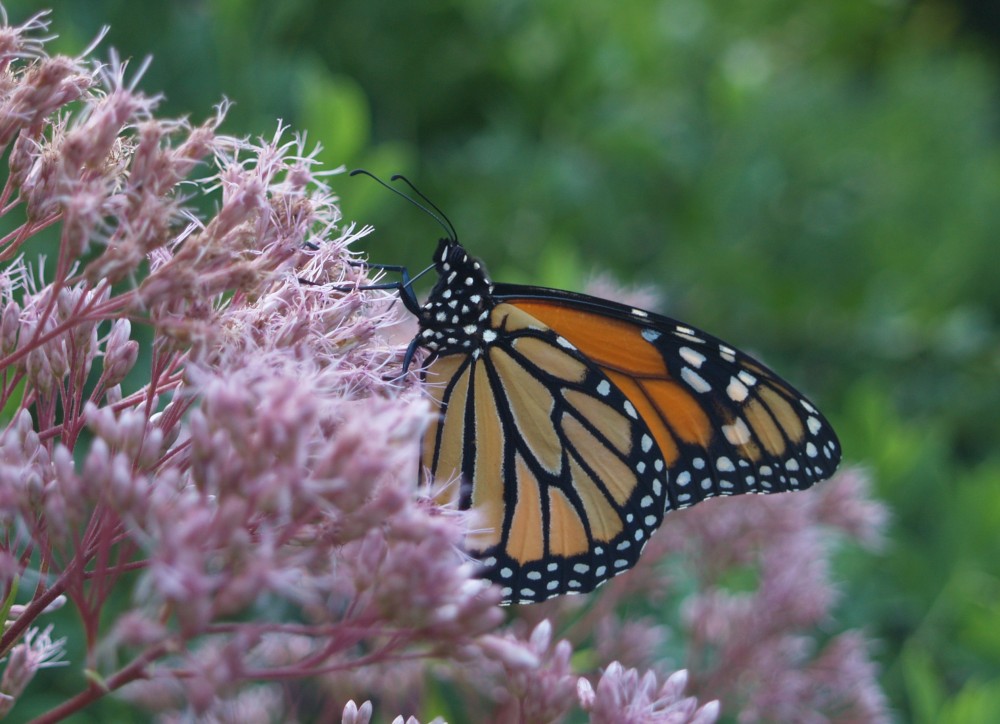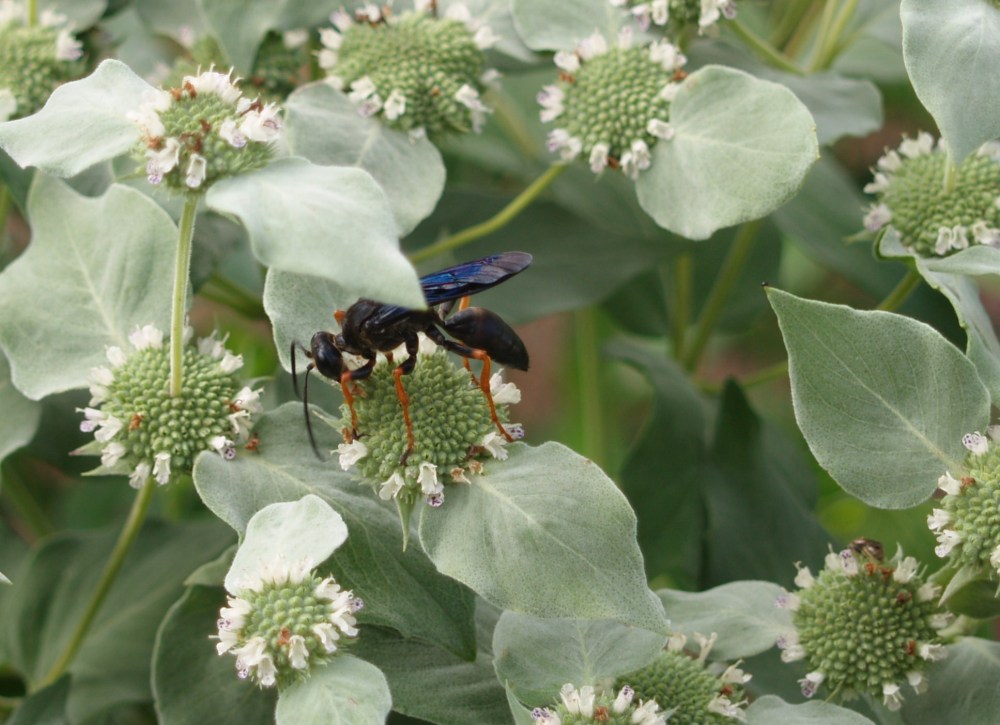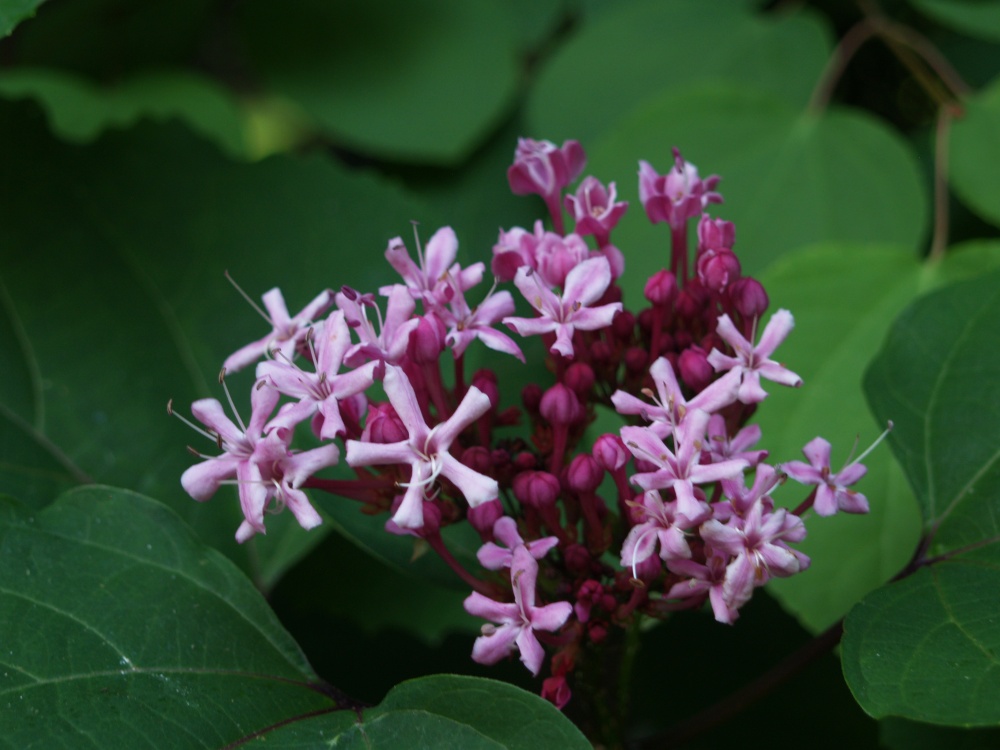Finally, I’m able to walk into the back third of the garden without sinking to my ankles in mud. Forecasts predict that this short dry spell could end soon, but I’m thankful that I’ve been able to mow the small section of lawn without having to winch the tractor out (again). Besides the lawn, the wet early summer has not been much to complain about, though the gardener will always find something. Branch tips of ‘Skeeter’s Broom’ Japanese maple (Acer palmatum ‘Skeeter’s Broom) have defoliated, I suspect due to the constant dampness, and though I don’t expect much in the way of growth this summer, I hope that there is no permanent damage to the roots.


This garden is not irrigated, so regular summer storms are greatly appreciated as long as winds are not severe (except in the small section that remains damp through the year). Many shrubs and perennials prefer damp to dry, so in late July there are few signs of the heat stress that is typical for mid summer. And, with plentiful blooms, there is a constant buzz from pollinators (above). Mountain mint (Pycnanthemum muticum) is dangerously at peak bloom. The vigorously spreading native attracts numerous bees, hoverflies, and nasty looking wasps so that the gardener must take care not to venture too close.

Though it rarely persists through even our mildest northwestern Virginia winter, I cannot resist planting a few dozen bulbs of Abyssian gladiolus (Acidenthera murielae, above) every few years. I order these in mid winter, figuring that there must be too few blooms in August, though the number of flowers in the garden today surely dispels that thinking. In winter, it seems that there are always too few flowers, and there is certainly no harm in having a few more at any time.

In some gardens rose glorybower (Clerodendrum bungei. below) is an unwelcome and aggressive nuisance, but here it is too shaded to spread too far. Also, it’s planted beside mountain mint so the two have the opportunity to fight it out for dominance. So far, the mint has prevented glorybower from spreading, though the shade from a large katsura tree (Cercidiphyllum japonicum) is more likely to be the reason. While the flowers of the suckering shrub are lovely, I initially planted it when someone told me long ago that its foliage smelled like peanut butter. It does, somewhat, but unpleasantly, so I avoid touching the leaves as much as possible. It is quite convenient that the pleasantly scented mountain mint is only a few feet away.

I love mountain mint. It’s vigorous, elegant, entirely trouble free, and attracts more summer pollinators than any other perennial in my garden. I don’t mind getting close, either. The bees and wasps are so busy grazing that they pay no attention to me.
I suggest that it is unwise to disturb any hoard of stinging insects, but I venture too close often and rarely pay the penalty. Though wasps and bees are occupied with their feeding, I can be quite an annoyance sticking my nose in others business, and occasionally I am stung.
No mistake should be made with mountain mint to expect that it will be well behaved. As much as I favor the plant, if it was not hemmed in by deep shade and lawn I expect it would run rampant. Regular maintenance could keep it within bounds, but that is the part of gardening where I fail too often.
Back to the deer issue: could you tell us again how you rotate the repellants to keep the deer away? Can you mention brand names?
I begin spraying a deer repellent May 1, and continue through November 1. The November spray is a double dose on those evergreens that deer target. I alternate Bobbex and DeerAway (or DeerOff) because one has a rotten eggs smell and the other a wintergreen scent. By alternating the deer are less likely to become accustomed to the smell of the repellent, and this should increase its effectiveness. Unless I forget to spray, I’ve never had more than a nibble or two, which is to be expected from young deer.
There are many other repellents available, and I have not tested others. I’ve heard that Liquid Fence is a good one, and certainly others are just as effective as the ones I use. I am more skeptical about repellents that use coyote urine or pepper sprays. I’ve heard reports that these wash off and must be applied more frequently, but in defense I hear people say that their repellents are not effective. I am quite convinced that reports of ineffective repellents are related to failure to spray on schedule.
In my experience, heavy rain does not wash off the repellents I use within a month. Several times I’ve had ten or more inches of rain (in June this year), without any problems with plants that were sprayed. If the repellent had washed off, the neighborhood deer would let me know within a day or two.
Thank you; although you are in a different zone than I, most of your observations are effective up here in 6A and very helpful since I am new to this kind of gardening and have no clue. Keep up the good work!